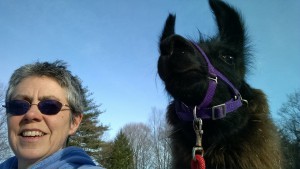 This is the first in a series of ponderings on a variety of training/handling/relationship issues that were sparked by a recent seminar I attended. This is the background to the subsequent meanderings of my mind. Sometimes we learn the most from our mistakes. Both Joe and I hope that is the case.
This is the first in a series of ponderings on a variety of training/handling/relationship issues that were sparked by a recent seminar I attended. This is the background to the subsequent meanderings of my mind. Sometimes we learn the most from our mistakes. Both Joe and I hope that is the case.
There’s a dirty little secret at Far Fetch Farm. While Joe has an admiring public, is handsome and charming, ours is a relationship fraught with conflict. I have to halter him up and take him to pasture every day and it has gotten increasingly difficult over time. Let us just say that I have experienced llama spit more times than I care to admit. Once haltered Joe is a lovely creature but the process to that point increasingly feels more like dental work than partnership.
I will be the first to admit that I didn’t really understand camelid behavior. They seem to be a cross between a cat and a horse. Last time I rode a horse I was in my teens. Joe has things in common with sheep (ie being prey animals rather than predators) but things are different and I am also asking him to do things quite different than I ask of my sheep. Camelids and dogs, who I actually understand better than people sometimes, don’t have as much in common as I would wish.
Our decline began the day that the vet came and trimmed his toes and manhandled him. I was disturbed at the time but I honestly didn’t know how to intervene. That afternoon when I went to move Joe, the projectile spit was quite impressive. I was totally unprepared for it, coming from my happy-go-lucky llama. And Jura, the herding dog, wisely took off for points unknown.
Joe was trained to be a guard llama by an excellent handler. He is quiet, calm, patient with his animals but is a little more “alpha” oriented than me and I guess some handling things got lost in translation. Or I just wasn’t convinced that I had to think about dominance in a relationship. As I look back, knowing what I have learned in the last few days, I realize that his advice was better than I thought but my lack of experience and different way of thinking made it less useful to me than it could have been.
THE STORY
When we started on this journey in New Hampshire, Jura the herding dog was a started dog but young, inexperienced as I was. He is a compulsive gatherer – given confusion about what to do, he will always bring sheep to my feet. That is a problem for a llama who is “tied” to me by a 6 foot lead. Llamas hate to have things messing with their feet. 30 sheep pushed up against them is probably like waterboard torture.
My sheep were also unused to being worked by a dog and they quickly found Joe to be a safe haven. So Joe and Liz combined must have seemed like an island in the South Pacific while being herded by a shark (a sweet, gentle shark but they didn’t know that yet).
In this scenario, Joe was the most experienced of the four species and everything was just wrong from his perspective. Those sheep are supposed to walk ahead or fall behind. Dog is nervous because the llama is a bit unnerving now. Sheep are nervous because green dog is pushing them too hard. Llama is nervous because the sheep are about to take out his knees. And human is nervous because while it isn’t a goat rodeo, it just isn’t a pleasant experience for anyone involved.
So, the human at least had the presence of mind to take the llama out of the equation and walk him separately. Too many species for my brain to handle at once.
Patience has never been my long suit. I like to say that working in a animal shelter as a dog walker with some mighty stressed out dogs taught me patience that I never had before. I like to move quickly and hopefully efficiently (though like the rabbit and the hare – fast doesn’t always win the race), but for many other beings on the planet that is often too quick. And I tend to be a lumper (too many steps at once) rather than a splitter (incremental improvements).
Not walking Joe with the sheep when I already walk a quarter mile one way out to pasture is a PITA and a time sink. So patience can get a bit thin. My reaction to all my reactionary animals was “geez, will you all grow up and act like you are supposed to?”, as if I had nothing to do with it.
And so, I would try to catch him for haltering at a pace that was uncomfortable to him. I had a couple incidents where I probably made him feel forced. And the downward spiral began. He withdrew, I pursued. I cornered him. He objected. I tried a bunch of different things and I just couldn’t figure out what the salient reinforcers were for him. But the sight of me with a halter caused him to move away and flatten his ears. I knew this was on me. The prevailing advice out there is to make the llama “submit”. If I didn’t believe that was the right thing for dogs, why would I think it was the right thing for llamas? I tried food as a reinforcer but he has food issues since the sheep will gladly steal food from him, given the opportunity. It seemed to distress him more to have the food around.
We had our ups and downs but more and more downs. And I honestly didn’t understand why some days he would practically halter himself and other days it was a dragged out battle. I parked him with the rams where I didn’t have to deal with it but the primary reason for having him on the farm is to guard sheep. At this point, I was ready to rehome Joe into a situation where he didn’t need to halter up. But that doesn’t solve my needs for a guardian animal. And I know that this is my problem not his so if I got another llama, it is likely that I would create the same problem again. I created this monster, it is mine to fix.
The first step to change is admitting you have a problem and that you need help. All the “advice” I was getting was not helpful. I knew there had to be a way of thinking about this differently. I needed to understand the salient reinforcers and aversives for llamas because clearly I wasn’t getting it. In searching for advice, things ranged from “you need to dominate the animal so that he doesn’t take control of the situation” (ah yes, I can sit on a 300 lb llama until he stops spitting) to “if a llama spits he has been abused” (well that’s helpful. Maybe I have abused my llama but I didn’t mean to – so what should I do about it?). By dumb luck I stumbled on this site called “Camelidynamics”. Described on the website as “It is a collection of methods that represent the most positive least intrusive techniques for training and managing camelids.” I thought “Wow, almost LIMA (least invasive, minimally aversive the mantra of IAABC) – maybe there is hope. Not only that, she does clicker training with camelids… okay this is worth exploring.”
And then by astonishingly dumb luck there was a seminar held in Connecticut in July. I was nervous though because I am always worried when people have catchy names for their methods. But I took the plunge.
I knew I had landed in friendly waters where I would learn to swim with the llamas when, at the start, Marty introduced herself and explained that she stood on the shoulders of BF Skinner, Susan Friedman and Karen Pryor, as well as several other notables with whom anyone who has been studying animal behavior would be happy to share a meal. My sigh of relief was probably audible. Even if I didn’t understand camelid behavior well, the learning theory, the approach was immediately going to make more sense than all the seeming conflicting advice I had.
I was not disappointed. By the end of the first morning I had a huge insight into how my behavior was influencing Joe’s and how one single change of mine might change the whole dynamic. For a prey animal, escape is the single most important resource. Duh. How many times have I said to dog owners that they need to give their fearful dog an avenue of escape from scary things? Really, how many? Geez, I am so adamant that people provide and teach (if the dog doesn’t understand it) dogs a way to flee and move away from scary things that I have probably scared the humans away with my intensity. When you give an animal flight as an option, they can often begin to deal with the thing at hand, because they always have the option to move away. Being able to move away, makes an animal feel safer.
As I looked back, I realized that the times that were easy to halter Joe had two characteristics: 1) I was calm and patient and applying little pressure and 2) he had an escape route. Instead of him being in a corner and forced to accept the halter, he was at my side. Too many times we were doing a dance where I wasn’t just leading but pushing from behind. I was forcing my hand and at the same time blocking his escape. One of Marty’s more salient points about the escape route is that you need to control it and make it clear to the animal that you are offering it up. But it needs to be real too.
I am not new to learning theory, training, antecedent arrangements, flight or fight so aside from the actual mechanical skills, how to set up things for success with llamas in particular and better understanding llama reinforcers/aversives, most of the weekend I spent hitting myself over the head with an imaginary newspaper. It didn’t hurt by the way – except the time I slapped myself on the head in an enthusiastic explanation of how utterly obvious what Marty was saying seemed to me. There are so many reasons I gotta stop talking with my hands – self injury is only one of them. DOH, DOH, DOH.
There are four interrelated concepts that I am churning about in my head. In the next couple of weeks I hope to churn on them a bit more and write something about them since writing often cements things in my head and occasionally provides insights to others.
- Antecedent arrangements(setting up for success). I know this. I know this. I know this. When you are training a dog, you set up the situation so that the “right choice” is pretty obvious and the wrong choices are eliminated or constrained to the best of your ability. In the case of training a dog to herd you start out with calm sheep in a small pen. It reduces the infinite number of things that could go wrong to an even dozen or so (probably more like 100 but we can hope), and increases the chances that the dog will do the right thing. When working with a fearful dog, you set up the scary thing far enough away that the dog can manage it so that it can choose to do the right thing. When first catching a llama you do so in a small space, with other comforting animals around it if possible, but one where it can move away from you if it needs to escape.
- Balance. This is the concept I most need to think about and unpack. Marty emphasized the importance of an animal feeling balanced in order to feel safe. When an animal feels safe we can often approach it and do things to it that it might otherwise struggle against. We don’t feel in control when someone takes our feet out from under us. Why should an animal? In early herding training the most effective time to teach a dog to stop on the sheep is by catching the moment when there the sheep are balanced between dog and human. The dog doesn’t feel the pressure of the sheep’s desire to escape. The sheep feel less pressure from the dog. We humans tend to take away balance in order to control an animal. We jerk on a dog’s leash. We flip a sheep to trim its toes. We tie up a horse. We take away other human’s literal or figurative balance by taking away basic rights and privileges. We strongly believe that taking away physical choices exerts our control. I have been thinking about how making an animal feel safe and balanced may actually increase our control. Because camelids are such funny creatures with their long necks, the effect of balance is extremely obvious. Which leads to:
- Control/Choices. I have never been much for forcing a dog to do something. I have seen powerful effects when you lead an animal to making a choice. Whether human or otherwise, when we actively choose to do something, we are more motivated and willing participants.
- And finally, pressure. When working with a fearful animal I have found the most effective way of moving them closer is the opposite of what we think. If we back off the pressure, we bring them in, if we go after them, they move out. We often apply way too much social pressure to animals when we mean to bring them closer. Our impatience takes away their choice. Desensitization, counter conditioning, pressure and release are all a part of a dance. Forward and back, a cha cha if you will.
I have lots more to say about these four things but I will save them for another day.
For now, Joe and I are starting a new journey. He doesn’t know it yet, but I do. I have the road map now. He may decide how fast we go and where we take some unexpected side roads. But we are on our way. This morning I went in to desensitize Joe to a catch wand, a tool which may help give him some of the space he needs to feel better about me. I moved it about him but didn’t try to catch him. That he accepted it was enough for today. And when I was done and walked away, he followed me. It won’t be one foot in front of the other. It is going to be a cha-cha now.


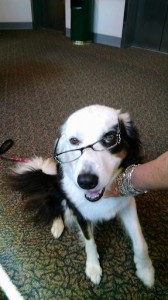
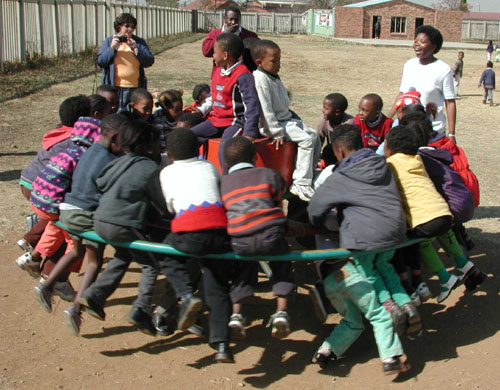
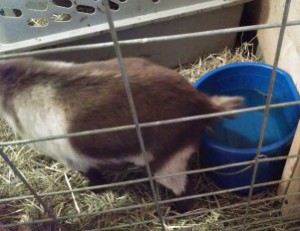
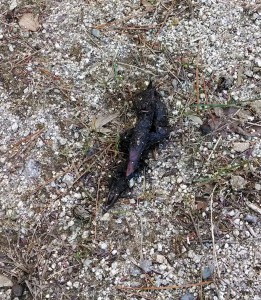


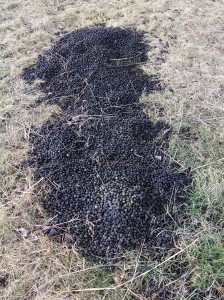
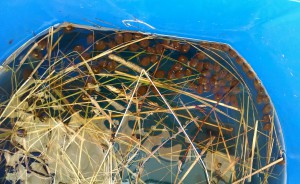
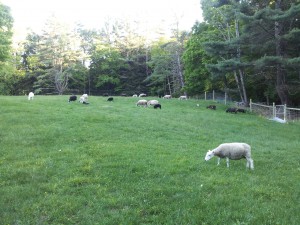
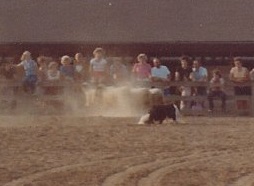
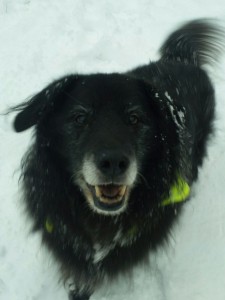
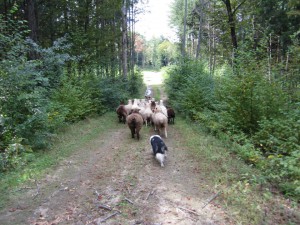 barnyard gate. They are comfortably held to the gate until I get up to open it. He has learned from experience the sweet spot and I no longer even need to ask him to stop. Every day something comes up where Jura has to think for himself. Sheep have minds of their own and he will always be better at noticing their intentions than I am. I can send him out on a blind gather – where I can not see the sheep. And he does all the things he needs to do, on his own, to bring them back to me.
barnyard gate. They are comfortably held to the gate until I get up to open it. He has learned from experience the sweet spot and I no longer even need to ask him to stop. Every day something comes up where Jura has to think for himself. Sheep have minds of their own and he will always be better at noticing their intentions than I am. I can send him out on a blind gather – where I can not see the sheep. And he does all the things he needs to do, on his own, to bring them back to me.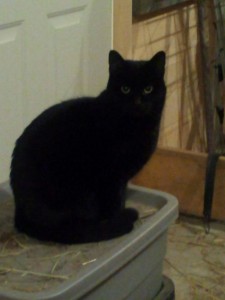
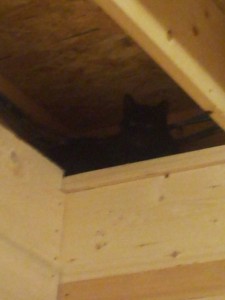
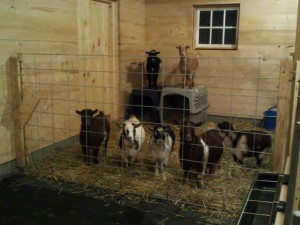
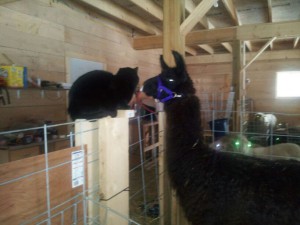
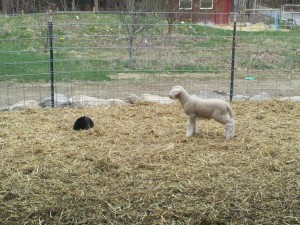
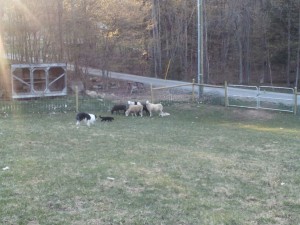
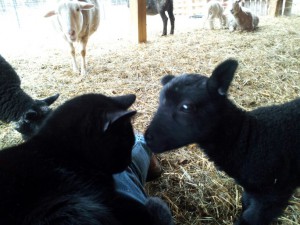
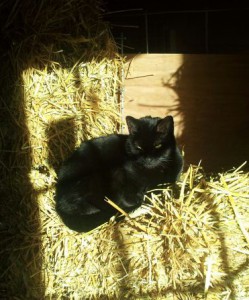
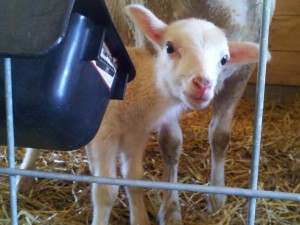 And finally this past Sunday, without fanfare or drama, Annie, my mixed up part hair/part wool sheep, gave birth to her little ewe lamb. And lambing season is done.
And finally this past Sunday, without fanfare or drama, Annie, my mixed up part hair/part wool sheep, gave birth to her little ewe lamb. And lambing season is done.